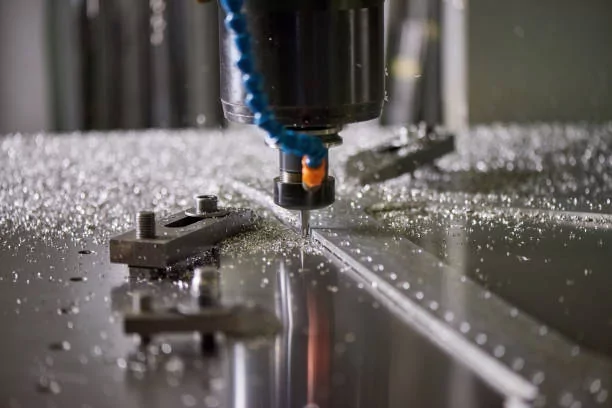Do you think something's wrong? Click me to try cnc milling shop.
When it comes to precision manufacturing, CNC milling plays a crucial role in various industries. This comprehensive guide will provide you with an in-depth understanding of the CNC milling industry, its processes, and its significance in today's global market.
The Basics of CNC Milling
CNC milling, short for Computer Numerical Control milling, is a machining process that utilizes computerized controls to remove material from a workpiece. It involves the use of rotary cutters to shape and form the desired part or product. The CNC milling machine follows a set of programmed instructions to achieve precise and accurate results.
One of the key advantages of CNC milling is its ability to produce complex shapes and intricate designs with high precision. This makes it an ideal choice for industries such as aerospace, automotive, and medical, where precision and quality are of utmost importance.
The CNC Milling Process
The CNC milling process consists of several steps that ensure the successful creation of the desired product. These steps include:
1. Designing the CAD Model
Before the milling process begins, a Computer-Aided Design (CAD) model is created. This digital representation of the desired part serves as the blueprint for the CNC milling machine.
Using specialized software, engineers design the part, specifying dimensions, tolerances, and other important parameters. The CAD model is then converted into a format that the CNC milling machine can understand.
2. Programming the CNC Machine
Once the CAD model is ready, the next step is to program the CNC milling machine. This involves writing a series of instructions that guide the machine's movements and operations.
The programming language used for CNC milling is called G-code. It contains commands that tell the machine how to move, what tools to use, and at what speed to operate. The G-code is generated based on the CAD model and the desired machining operations.
3. Setting Up the Machine
After the CNC machine is programmed, it needs to be set up for the milling process. This includes installing the appropriate cutting tools, securing the workpiece, and calibrating the machine.
Proper setup is crucial to ensure accurate and efficient milling. The cutting tools must be aligned correctly, and the workpiece must be securely clamped to prevent any movement during the milling process.
4. Executing the Milling Operation
With the machine set up, the milling operation can begin. The CNC milling machine follows the programmed instructions, moving the cutting tools along the specified paths to remove material from the workpiece.
During the milling process, the machine continuously monitors various parameters such as cutting speed, feed rate, and tool wear. This allows for real-time adjustments to ensure optimal performance and quality.
The Significance of CNC Milling in the Industry
CNC milling has revolutionized the manufacturing industry in several ways. Its significance can be seen in:
1. Increased Efficiency and Productivity
Compared to traditional manual milling, CNC milling offers significantly higher efficiency and productivity. The automation of the milling process eliminates the need for manual intervention, reducing the chances of errors and increasing overall productivity.
Furthermore, CNC milling machines can operate continuously, 24/7, allowing for round-the-clock production. This ensures faster turnaround times and increased output, meeting the demands of today's fast-paced market.
2. Enhanced Precision and Accuracy
One of the key advantages of CNC milling is its ability to achieve high levels of precision and accuracy. The computerized controls and advanced cutting tools enable the production of complex geometries with tight tolerances.
Whether it's creating intricate components for aerospace engines or precise molds for medical devices, CNC milling ensures consistent quality and adherence to specifications.
3. Versatility and Flexibility
CNC milling machines are highly versatile and can handle a wide range of materials, including metals, plastics, and composites. This versatility allows for the production of diverse products across various industries.
Moreover, CNC milling machines can be easily reprogrammed to accommodate design changes or produce different parts. This flexibility enables manufacturers to adapt quickly to market demands and stay competitive.
4. Cost-Effectiveness
While CNC milling machines may require a significant initial investment, they offer long-term cost savings. The automation and efficiency of CNC milling reduce labor costs and minimize material waste.
Additionally, the high precision of CNC milling eliminates the need for secondary operations, such as manual finishing or assembly, further reducing costs and lead times.
Overall, CNC milling has transformed the manufacturing industry, enabling faster production, higher quality, and increased competitiveness.
Conclusion
In conclusion, CNC milling is a vital process in precision manufacturing. Its ability to produce complex shapes with high precision has made it indispensable in industries worldwide.
By understanding the basics of CNC milling and its significance in the industry, you can appreciate the role it plays in shaping the products we use every day.
For more information on CNC milling and its applications, you can visit the following credible sources:
